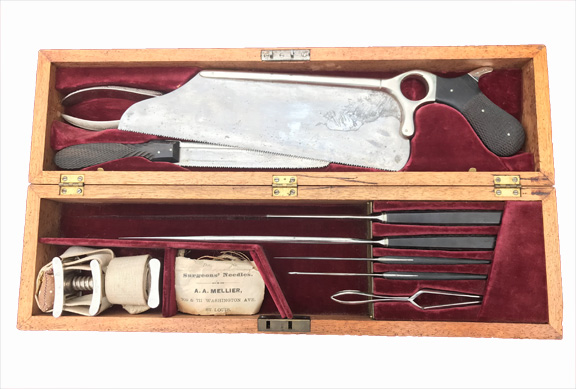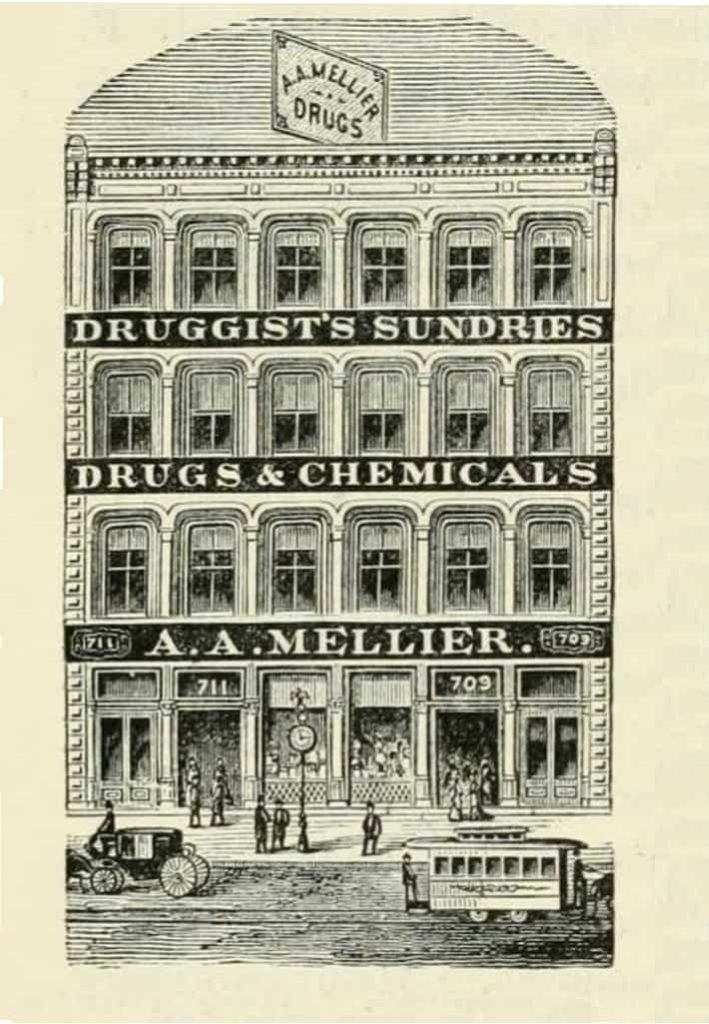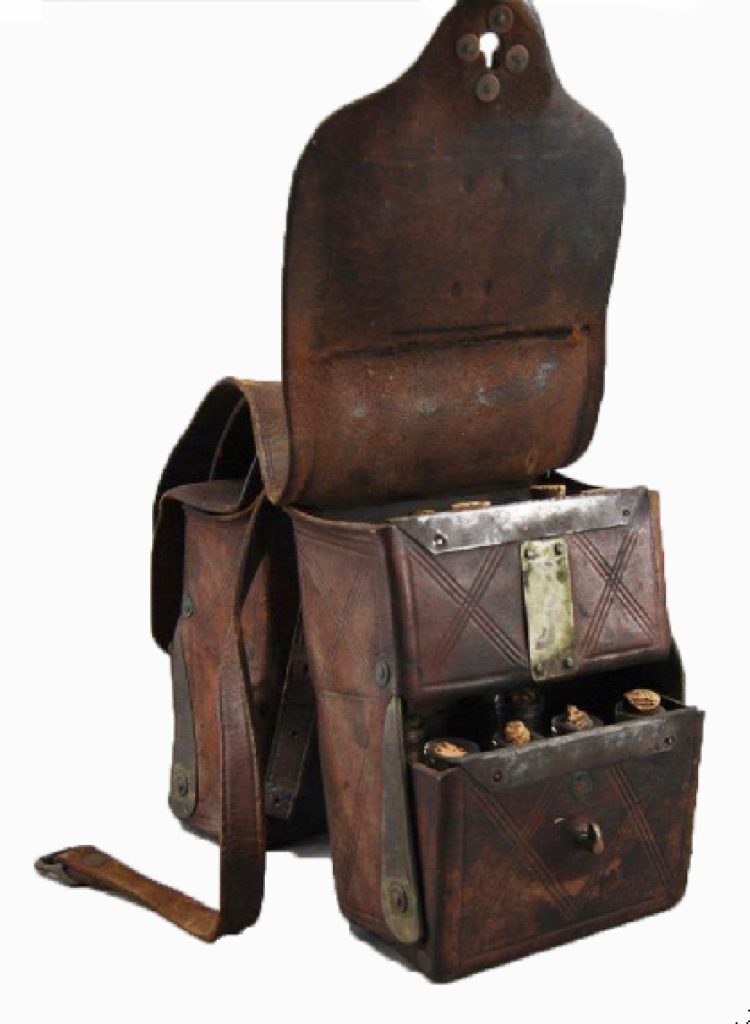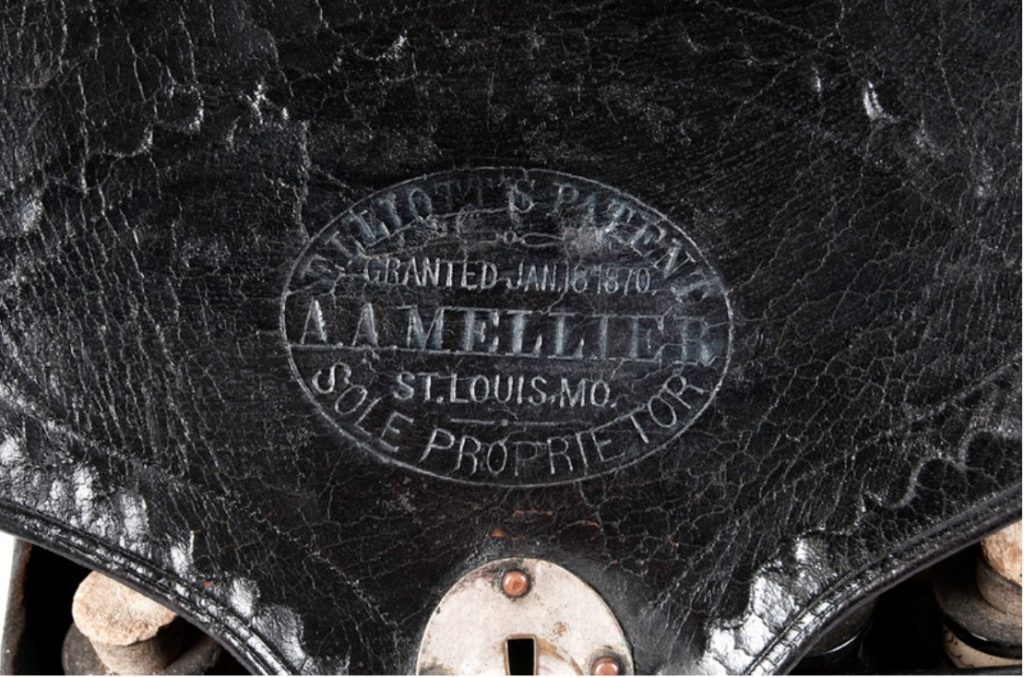
This set is a wonderful example of a post-Civil War, yet pre-sterilization, amputation set. The changes in materials used, and in the design of the instruments are evident when one compares this to earlier sets.
For starters, the case, though still lined in velvet, appears to be made of oak, not rosewood or mahogany as is found in earlier sets. The instruments are plated – which immediately dates it to the post-1870’s time frame. The instrument handles are not chromed (see the later Aloe set for comparison), but are still made of ebonizied wood with a cross-hatched design. However, both the handles and blades are narrower and not as “thick” as early knives, and the tips of the blades are straight or slightly upturned, as was the trend post-Civil War. Although the tourniquet at first glance looks exactly like those seen in Civil War sets, an obvious “giveaway” is that it is either nickle-plated or made of German silver – and not brass. The tourniquet buckle, though brass, is thin, with the prongs almost wire-like. It is much less substantial than either the heavier cast-brass buckles, or the blued steel buckles of tourniquets of earlier years.
Of course, because the pieces and packet in the set are all marked with the name Mellier, it is easier to determine the approximate age of the set. Up until this period of time, instrument makers had their own complete “in-house” operation, designing, making, and building instruments and sets to be sold under their name. There was a great deal of pride taken in workmanship, because their name was on the instrument. As the years progressed, industrial mechanization expanded, and the surgical instrument industry evolved to much larger scales of production. Now, a multitude of sets could be manufactured and shipped anywhere, to be sold by a retailer whose name would be imprinted on the instruments. Such was the case with the set shown here. It is a well-made set, to be sure – but sadly, the actual manufacturer is not known; it was made expressly for retail by the Mellier company.
AUGUSTE AMADEE MELLIER
1825 – 1889
Auguste Amadee Melllier was born in France in 1825, the son of Albin Mellier, whose father owned a large printmaking company. Albin came to America in 1828, and established one of the first print-works near Baltimore. Young Auguste was sent to London and Paris to further his education, and while abroad, was orphaned.
In 1847, at the age of 19, Auguste returned to the U.S. and took up residence in St. Louis, Missouri, where he made the acquaintance of men engaged in the drug business. With their financial backing, he opened the firm of Richardson, Mellier & Co. in 1857. The co-partnership was dissolved in 1862, and in 1865 became Scott & Mellier, and was located on the corner of Main Street and Washington Avenue.
In 1870, Mellier purchased his partner’s interest and became the sole proprietor, the firm now being known as A. A. Mellier. His trade developed rapidly, and soon he was one of the largest wholesale druggists in the West. In 1875, he combined properties at 709 and 711 Washington Street into a large, elegant building which included a retail department and large warehouse.

He engaged in retail pharmacy, the manufacture of proprietary medicines (such as “Santonine Worm Candy”), as well as the sale and manufacture of “Elliot’s Patent Saddlebags”, produced for the traveling physician and fitted with 24 glass medication bottles.


In addition to being the sole proprietor for Elliot’s Patent Saddlebags (very popular with the western physicians still traveling by horseback), Mellier had an extensive jobbing business as well, and sold surgical sets and instruments. As already noted, I think it unlikely that his firm actually manufactured the instruments, most likely he had them made for him and then sold the kits under his name.
In 1887, his two sons became part owners and the firm was re-organized as the Mellier Drug Co., under which auspices it continued to do business until after the turn of the century.
